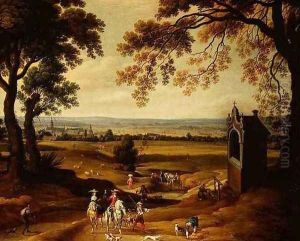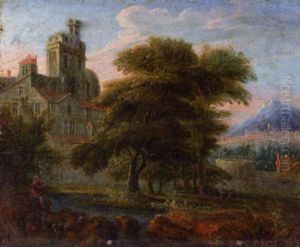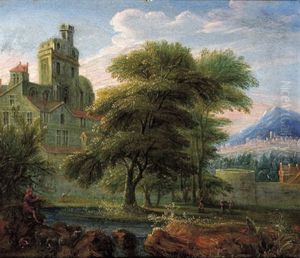Theodore van Heil Paintings
Theodore van Heil, also spelled Theodor van Heil or Theodoor van Heil, was a Flemish Baroque painter known primarily for his landscape paintings. Born in Brussels in the year 1620, he belonged to a family of artists; his father, Daniel van Heil, was also a painter, and his siblings were involved in the arts as well.
Van Heil's work typically depicted natural scenes, often embellished with architectural elements or figures, and he was part of the movement in Northern European art that saw a growing preference for landscape and genre scenes over religious or historical subjects. This shift was influenced by the rise of a wealthy merchant class who were more interested in personal, decorative art for their homes rather than the grander, more didactic works commissioned by the church or nobility.
Throughout his career, Theodore van Heil developed a style that was notable for its fine detail, use of light, and balanced composition. His landscapes often conveyed a sense of tranquility and order, reflecting the Baroque period's fascination with the natural world as an embodiment of divine creation.
Little is known about van Heil's life outside of his work. Records indicate he remained in Brussels for most of his life, where he contributed to the local art scene. The exact date of his death is somewhat uncertain, but it is generally accepted that he died around 1690.
Despite being less well-known than some of his contemporaries, Theodore van Heil's paintings are appreciated for their contribution to the development of landscape painting in the Low Countries. His works can be found in various art collections, museums, and galleries around the world.


























